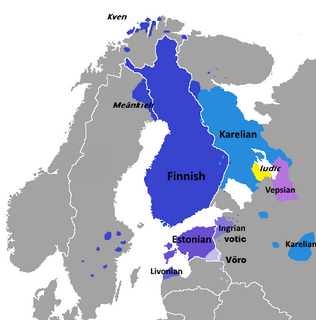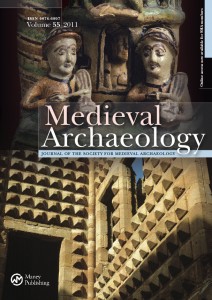The Northern Crusades or Baltic Crusades were Christian colonization and Christianization campaigns undertaken by Catholic Christian military orders and kingdoms, primarily against the pagan Baltic, Finnic and West Slavic peoples around the southern and eastern shores of the Baltic Sea, and to a lesser extent also against Orthodox Christian Slavs.

Vikings is the modern name given to seafaring people primarily from Scandinavia, who from the late 8th to the late 11th centuries raided, pirated, traded and settled throughout parts of Europe. They also voyaged as far as the Mediterranean, North Africa, Volga Bulgaria, the Middle East, and North America. In some of the countries they raided and settled in, this period is popularly known as the Viking Age, and the term "Viking" also commonly includes the inhabitants of the Scandinavian homelands as a collective whole. The Vikings had a profound impact on the early medieval history of Scandinavia, the British Isles, France, Estonia, and Kievan Rus'.

In folklore, a werewolf, or occasionally lycanthrope, is a human with the ability to shapeshift into a wolf, either purposely or after being placed under a curse or affliction with the transformations occurring on the night of a full moon. Early sources for belief in this ability or affliction, called lycanthropy, are Petronius (27–66) and Gervase of Tilbury (1150–1228).
Year 1252 (MCCLII) was a leap year starting on Monday of the Julian calendar.
Viking metal is a style of heavy metal music characterized by a lyrical and thematic focus on Norse mythology, Norse paganism, and the Viking Age. Viking metal is quite diverse as a musical style, to the point where some consider it more a cross-genre term than a genre, but it is typically seen as black metal with influences from Nordic folk music. Common traits include a slow-paced and heavy riffing style, anthemic choruses, use of both sung and harsh vocals, a reliance on folk instrumentation, and often the use of keyboards for atmospheric effect.

Germanic paganism included various religious practices of the Germanic peoples from the Iron Age until Christianisation during the Middle Ages. Religious practices represented an essential element of early Germanic culture. From both archaeological remains and literary sources, it is possible to trace a number of common or closely related beliefs among the Germanic peoples into the Middle Ages, when the last areas in Scandinavia were Christianized. Rooted in Proto-Indo-European religion, Proto-Germanic religion expanded during the Migration Period, yielding extensions such as Old Norse religion among the North Germanic peoples, the paganism practiced amid the continental Germanic peoples, and Anglo-Saxon paganism among the Old English-speaking peoples. Germanic paganism is best documented in 10th- and 11th-century texts from Scandinavia and Iceland.

The Nordic Bronze Age is a period of Scandinavian prehistory from c. 1750–500 BC.

Anglo-Saxon paganism, sometimes termed Anglo-Saxon heathenism, Anglo-Saxon pre-Christian religion, or Anglo-Saxon traditional religion, refers to the religious beliefs and practices followed by the Anglo-Saxons between the 5th and 8th centuries AD, during the initial period of Early Medieval England. A variant of Germanic paganism found across much of north-western Europe, it encompassed a heterogeneous variety of beliefs and cultic practices, with much regional variation.
Martin Giles Palmer is a theologian, Sinologist, author and international specialist on all major faiths and religious traditions and cultures. He is the Founding President and Chief Executive of FaithInvest, an international not-for-profit membership association for religious groups and faith-based institutional investors, which empowers faith groups to invest in line with their values. FaithInvest grew out of the Alliance of Religions and Conservation (ARC) of which Palmer was Secretary General from 1995 to 2019. Palmer is also the Director of the International Consultancy on Religion, Education and Culture (ICOREC).

Otepää is a town in Valga County, southern Estonia, it is the administrative centre of Otepää Parish. Otepää is a popular skiing resort, popularly known as the "winter capital" of Estonia. During the 2005–2006 season it became the site for FIS Cross-Country World Cup events.

Ancient Estonia refers to a period covering History of Estonia from the middle of the 8th millennium BC until the conquest and subjugation of the local Finnic tribes in the first quarter of the 13th century during the Teutonic and Danish Northern Crusades.
Roberta Lynn Gilchrist, FSA, FBA is a Canadian-born archaeologist and academic specialising in the medieval period, whose career has been spent in the United Kingdom. She is Professor of Archaeology and Dean of Research at the University of Reading.

The Baltic Finnic or Balto-Finnic peoples, also referred to as the Baltic Sea Finns, Baltic Finns, sometimes Western Finnic and often simply as the Finnic peoples, are the peoples inhabiting the Baltic Sea region in Northern and Eastern Europe who speak Balto-Finnic languages. They include the Finns, Estonians, Karelians, Veps, Izhorians, Votes, and Livonians. In some cases the Kvens, Ingrians, Tornedalians and speakers of Meänkieli are considered separate from the Finns.

The Rus' people were an ethnos in early medieval eastern Europe. The scholarly consensus holds that they were originally Norse people, mainly originating from present-day Sweden, settling and ruling along the river-routes between the Baltic and the Black Seas from around the 8th to 11th centuries AD. They formed a state known in modern historiography as Kievan Rus', which was initially a multiethnic society where the ruling Norsemen merged and assimilated with Slavic, Baltic and Finnic tribes, ending up with Old East Slavic as their common language. The elite of Kievan Rus' was still familiar with Old Norse until their assimilation by the second half of the 11th century, and in rural areas vestiges of Norse culture lingered as long as the 14th and early 15th centuries.

Terra Mariana was the official name for Medieval Livonia or Old Livonia. It was formed in the aftermath of the Livonian Crusade, and its territories were composed of present-day Estonia and Latvia. It was established on 2 February 1207, as a principality of the Holy Roman Empire, but lost this status in 1215 when Pope Innocent III proclaimed it as directly subject to the Holy See.

Medieval Archaeology is an annual peer-reviewed academic journal covering the archaeology of the medieval period, especially in the United Kingdom and Ireland. It was established in 1957 by the Society for Medieval Archaeology and is published on their behalf by Taylor & Francis. The editor-in-chief is Aleks McClain.
Nora Berend is a Fellow of St Catharine's College, Cambridge and Professor of European History at the Faculty of History.
Naomi Sykes FSA is a zooarchaeologist and is currently the Lawrence Professor of Archaeology at the University of Exeter. Sykes researches human-animal relations in the past.

Zantyr is a lost Teutonic Order castle with established commandry and town with cathedral, seat of the bishopric. In the early 13th century it was located at present day Pomeranian Voivodeship, in Sztum County, in the municipality of Sztum, south of the village Uśnice or in the region Biała Góra at the confluence of the rivers Nogat and Vistula. Here, at the southern end of the Vistula delta region, resides the Nogat River Protected Landscape Area. During its brief history Zantyr was contested between Swietopelk II, Duke of Pomerania, State of the Teutonic Order and Bishopric of Pomesania. At the end around year 1280 the castle and town were reestablished at a new location and became known as Malbork Castle.

Atholl John Anderson is New Zealand archaeologist who has worked extensively in New Zealand and the Pacific. His work is notable for its syntheses of history, biology, ethnography and archaeological evidence. He made a major contribution to the evidence given by the iwi (tribe) Ngāi Tahu to the Waitangi Tribunal.












